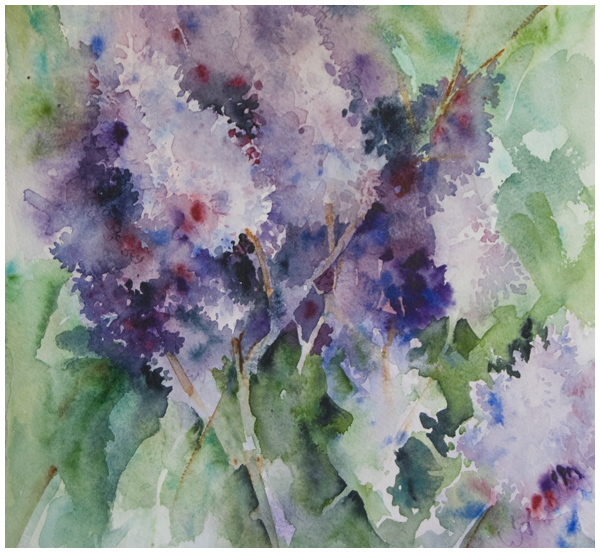Learning to Paint in Watercolour: Four Step-By-Step Paintings
I have enjoyed teaching beginners' watercolour workshops over the last two years. I always am a little nervous going in - it is challenging to make translatable what I have learned by trial and error over the last eighteen years. I find I don't always have a term for what I'm trying to teach and I blunder around trying to describe it. It's always better to show than to tell! I've also found that sometimes my students come into a watercolour class wanting less to learn how to actually DO watercolour and more to be told WHAT to do. I blame the "Bob Ross style" of painting where students come to a class and all walk away with exactly the same painting after being babysat through each stroke. I don't want to do that. I see my job as giving the tools to learn to paint - the resulting painting is not as important as the opportunity to be exposed to and use a variety of techniques.
With that said, I changed my methods a little bit during the fall session. Usually I teach one painting step-by-step and then the students choose their own reference photos and painting subjects, and I offer guidance. The feedback I was getting was that students were feeling lost and that it was just too soon to be painting independently. So during the eight weeks' of classes this fall, we went step-by-step through four paintings. I find the sunflower to be a great first painting. Lots of variety, but not too complex. I always tell students that when painting each petal to skip around rather than painting adjacent petals from left to right. One's technique always improves as the petals are painted, so any transition in skill or technique is not as visible if the petals are painted randomly across the page. Even I, an experienced painter, still do this with any painting demanding repetition.
Our second painting was this landscape. Most of us had driven by this old house north of town at one point or another. Our rural landscape is speckled with tumbledown granaries and homesteads, and the landmark barns are slowly disappearing.
Landscapes can be a challenge. With transparent watercolour you cannot paint the foreground over the background unless you want the background colours to show through, and yet it is not always possible to paint from foreground to background, depending on the complexity of what you are trying to paint. And the strength of a landscape painting is in the editing. While photos capture every detail of the landscape equally, in painting we cannot be so equable. To lead the eye, capture atmosphere and tell a story, we must edit what we see.
It`s been a long time since I painted a landscape and I was pleased to see that I was more comfortable with the editing process - I still clearly remember my early years of painting and feeling like my reference photo was dictating my painting`s outcome. In this Doe River landscape I felt much more in control and enjoyed painting my foreground with fluid spontaneity.
For our final two classes, I worked to transition my class into painting independently. I cannot stress how important practice is in the development of one's painting skills.The things I teach in my classes I learned over years of painting almost nightly, sitting on the couch with my painting board on my lap, and my supplies on a TV tray at my side. Creating a large painting can be intimidating, so our last paintings are small, postcard size, to give the students a feeling of freedom to paint on their own, and not feel too committed to a successful result. It's easier to throw away a ruined postcard painting than a quarter sheet of expensive watercolor paper.
We did some fun wet, splashy watercolouring with a small painting inspired by the lilac painting above. I love the different ways of creating texture that I employed in this painting. Lots of negative shapes and some embossed brush handle doodles.
Our final painting was this sweet little landscape. This old outhouse was tucked away into the trees along with an assortment of tiny outbuildings, and I was sad when it didn't hold up to being moved when we re-landscaped. I'm happy about the white space in this painting, and my students enjoyed a mini-tutorial on painting the aspen trees that grow everywhere in the Peace country.
So that's what my class was up to this fall! Would you like to join my next watercolour class session? We'll be starting on January 17th, 2013 - eight weeks of two-hour evening classes in which I teach you to paint and you get to try to figure out what I mean by "collaborating with paint and water." Message me for more details as my classes are small (six students) and they fill up quickly!




